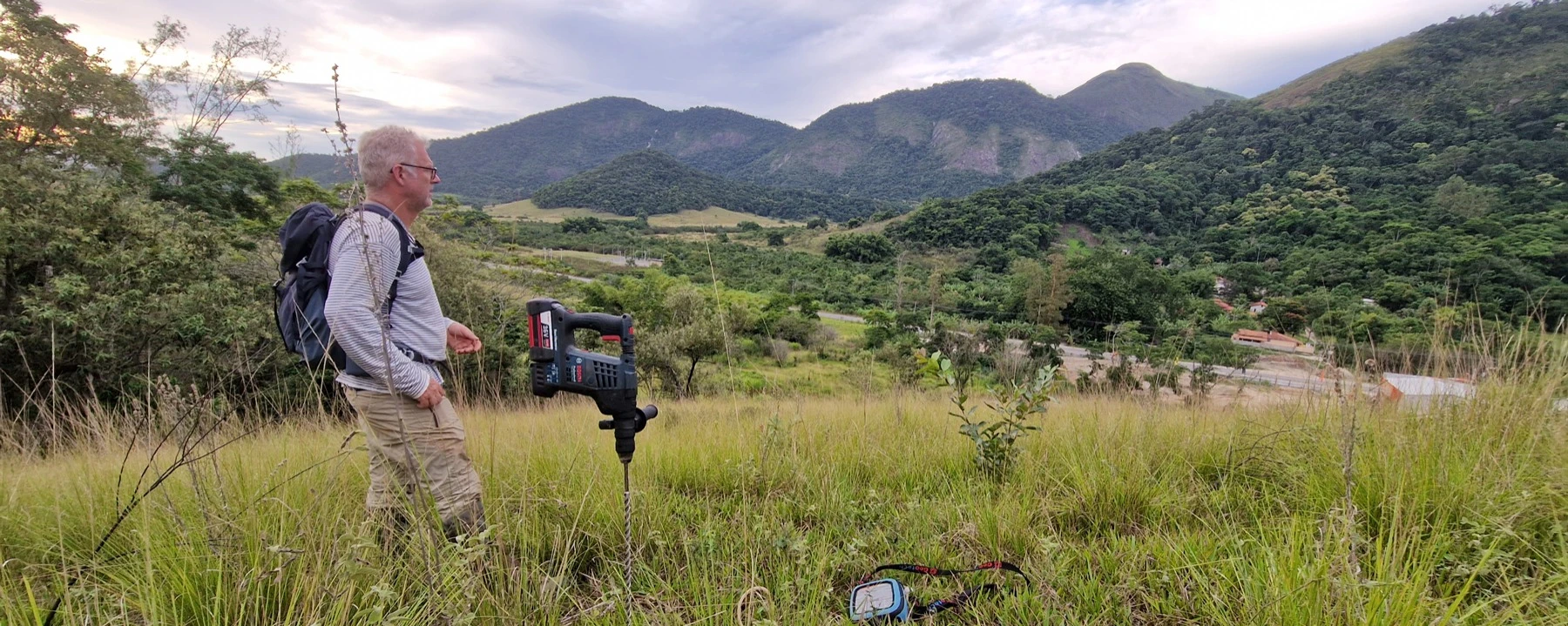

Leading the Way in Natural Hydrogen Exploration

Exploratory Strategies Applied to Natural Hydrogen:
Findings from 35 Exploratory Projects Worldwide
In order to assess the natural hydrogen resource, it is necessary to carry out regional and multidisciplinary exploratory campaigns. These campaigns make it possible to identify targets that must then be drilled to characterize them and measure concentrations and flows to model production profiles. Today, drilling data are far too rare and incomplete to allow such quantification on a global scale.
To carry out an investigation campaign and evaluate the ressource, the basic rules of exploration developed for mining or for hydrocarbons are valid:
- We start at the regional scale to get a “big picture” understanding the processes and we gradually refocus the investigations on targets by increasing the spacial resolution.
- Multidisciplinary methods are applied, involving at least geology, geochemistry, geophysics, hydrogeology and microbiology associated with hydrogen.
It is then necessary to adapt the exploratory strategies to the specificities of natural hydrogen. For example, if we are in the case of a hydrogen system fed by the serpentinization of a mafic rock, it will be necessary to consider that at the level of the "hydrogen kitchen", this alteration is accompanied by an increase in volume, a loss of density and seismic velocity and a modification of the electrical and magnetic properties by transformation of ferrous iron into ferric iron. It is therefore clear that a multiphysical approach, integrating at least magnetic, gravimetric and tomographic data, must be favoured in order to image "hydrogen cooking".
The main H2 migration pathways are faults corridors, discontinuities and sedimentary drains, that can be highlighted by standard seismic imaging. Moreover, new developments in passive seismic by GEOLINKS would allow the record of seismicity induced by fluid movements. It would be useful to track H2 migration from the “kitchen” to accumulation zones and seeps and thus reconstruct its pathway.
H2 trapping is a dynamic accumulation due to bottleneck effects, possibly combined with more classical trapping in anticline structures or fractured basement. The residence and renewal times are quick, contrary to the duration of oil and gas trapping, at the geological scale. As a result, the standard seismic imaging of the reservoir shape is not sufficient and must be complemented by an estimate of the H2 flow, based on a dynamic understanding of the accumulation.
The geological risk assessment will require an evaluation of the geological factors that are critical to the discovery of recoverable quantities of hydrogen in the modelled prospect (H2 generation, flow, accumulation, preservation…).
The main deliverables of the pre-exploration phase are the play map, the prospect portfolio and the exploration strategy (geophysical survey design, exploration well positioning and design…).
In the next step, once the exploration well has been drilled, well tests (quantification of hydrogen contents, other gases that can be co-produced and flow rates) will make it possible to quantify the resource and configure economic models.
35 projects worldwide
| Evaluation of natural hydrogen potential in Brittany, France. H2BRIT project, co-funded by the Conseil Regional de Bretagne. © CVA 2024 | Evaluation of natural hydrogen and helium potential in East Africa. © CVA 2024 |
| Evaluation of natural hydrogen potential in the Nouvelle Aquitaine region, France. H2NA project, co- funded by the Conseil Regional de Nouvelle Aquitaine. © CVA 2023 | Evaluation of natural hydrogen potential in South America. © CVA 2024 |
Author: Christophe Rigollet, CVA, Geoscience Director
Références
Natural hydrogen, a new source of carbon-free and renewable energy competitive with hydrocarbons – First Break, October 2022 - Christophe Rigollet, Alain Prinzhofer
About CVA and our natural hydrogen activities
CVA is a service company dedicated to the exploration and production of underground resources. The company was founded in France in 2006 by two geoscientists, Pierre Vinour and Etienne Cavallucci. Today, CVA has 500 employees, working for more than 200 clients in over 70 countries.
Convinced of the exceptional potential of natural hydrogen, in 2016 CVA launched its first research and development work in this field, setting up public and private partnerships in order to define an effective exploratory methodology and thus strengthen its technical-commercial offer.
In 2021, with the company 45-8 and the competitiveness cluster AVENIA, CVA co-founded earth2, a cluster programme aimed at creating a common European banner capable of bringing together the players in the field of underground hydrogen. The earth2 ambition is to become the benchmark European initiative for natural hydrogen.
Today, CVA’s expertise in the exploration of natural hydrogen is based on the completion of more than 35 projects on 5 continents.We have carried out these studies in very varied geological contexts, from country block scale, for all types of clients: governments, energy companies, investors... This rich feedback has led us to advise our clients on the exploratory strategy to implement and apply suitable and efficient working methods for natural hydrogen potential evaluation and exploration well positioning.
Register before Sept. 30 and save 10%. Places are limited for the face-to-face component.